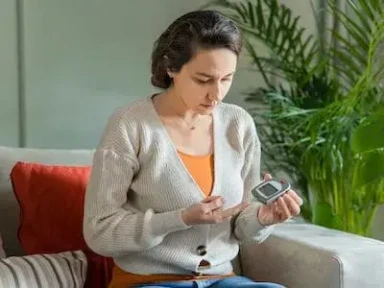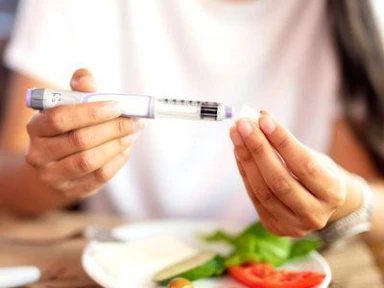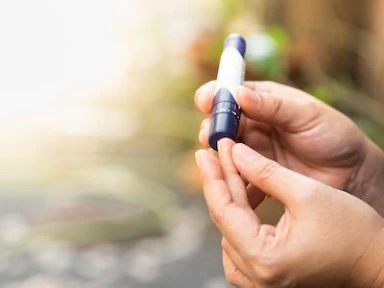Single injectable treatment may not be enough to get T2DM patient to Glycemic goal

Key Takeaway
Achievement and maintenance of optimal glycemic control is important for prevention and/or delay of acute and long-term complications of diabetes through patient-centered care.
-
Glycemic goals are achieved only when timely and appropriate therapyintensification is carried out when needed.
-
Numerous studies have shown that use of CGM significantly improves glycemic outcomes in both T1D and T2D.
Daily use of CGM and retrospective CGM data, combined with clinic-based or virtual (telehealth) visits has the potential to reduce therapeutic inertia.
-
For clinicians: CGM provides accurate glucose information, presented in a format that facilitates rapid interpretation and more informed therapy decision-making; and helps in increasing their efficiency and improve the quality-of-care delivery
-
For patients: CGM helps to obtain immediate feedback on their medications, dietary habits and other health behaviors affecting their glycemic status; enhances their disease-understanding; and improves treatment satisfaction and adherence to the prescribed regimens
Why This Matters
Therapeutic inertia (failure to initiate/intensify therapy) is a key contributor of suboptimal glycemic management when therapeutic goals are not reached.
Clinical guidelines recommend treatment intensification in individuals not meeting their glycemic targets within 3–6 months of initiating treatment.
-
Median time to treatment intensification may be as long as 2.9 years.
-
One-year delay in intensification is associated with increased risk of:
-
Myocardial infarction (67%)
-
Heart failure (64%)
-
Stroke (51%)
-
Barriers impacting clinicians’ ability to monitor and adjust therapy:
-
Lack of meaningful, actionable glucose data
-
Unfamiliarity with interpreting and utilizing glucose data
-
Time constraints
This article reviews the benefits of CGM vs BGM, evidence supporting CGM in management of T1D and T2D, and its use in primary care to facilitate appropriate and more timely therapy adjustments
Key Highlights
For further details, click on the below hyperlinks.
- Current CGM Technologies
- Commercially available CGM systems for personal use include real-time CGM (rtCGM) and intermittently scanned CGM (isCGM).
- Selecting a CGM device
- The AACE clinical practice guidelines strongly recommend CGM for all persons with diabetes, treated with intensive insulin therapy; however, selecting a CGM device can be individualized to each patient’s preferences and needs.
- Limitations with the use of BGM
- While BGM is the most commonly used method for monitoring glucose levels, it still has important limitations that should be considered.
- Benefits of using CGM vs BGM
- Numerous randomized clinical trials and real-world prospective and observational studies have shown the effectiveness of CGM vs BGM.
CGM metrics for clinical assessment of Glycemic control
| Time In Range (TIR) | Time Above Range (TAR) | Time Below Range (TBR) | ||||||||
| 70–180 mg/dL | >180 mg/dL | >250 mg/dL | <70 mg/dL | <54 mg/dL | ||||||
| T1D/T2D | Time/ day | % Time | Time/ day | % Time | Time/ day | % Time | Time/ day | % Time | Time/ day | % Time |
| General goals for nonpregnant adults | >16 h, 48 m | >70% | <6 h | <25% | <1 h, 12 m | <5% | <1 h | <4% | <15 m | <1% |
| Older/ High-Risk (modified goals) | >12 h | >50% | – | – | <2 h, 24 m | <10% | <15 m | <1% | – | – |
The recommended primary goal is to reduce %TBR while increasing %TIR; with improvements in these metrics, %TAR would be reduced and minimized by default.
Case studies
Below cases discuss the utility of CGM data for quick interpretation of glycemic patterns, timely initiation and appropriate adjustments in therapy:
For further details, click on the below hyperlinks.
For additional details, please refer to the source publication Martens TW, et al.
AACE, American Association of Clinical Endocrinology; AGP, Ambulatory Glucose Profile; BGM, blood glucose monitoring; CGM, continuous glucose monitoring; DKA, diabetic ketoacidosis; ESRD, end-stage renal disease; T1D, type 1 diabetes; T2D, type 2 diabetes; TAR, time above range; TBR, time below range; TIR, time in range.
- Martens TW and Parkin CG. How use of continuous glucose monitoring can address therapeutic inertia in primary care. Postgrad Med. 2022. doi: 10.1080/00325481.2022.2080419. Epub ahead of print. PMID: 35584802.


